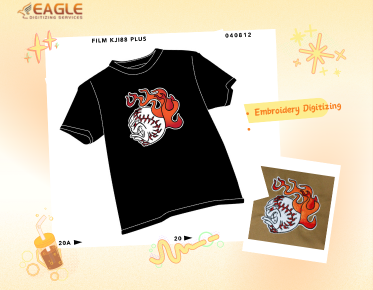10 Steps to Mastering Silk Screen Printing
Silk screen printing, also known as serigraphy, is a versatile and popular technique for creating vibrant prints. Whether you're new to this craft or looking to refine your skills, understanding the critical steps in the silk screen printing process can make all the difference in achieving a professional result. Below, we outline ten crucial steps in the silk screen printing process, making it accessible for everyone from beginners to seasoned artists.
1. Design Preparation
The first step in silk screen printing begins with preparing your design. This involves choosing an appropriate image and ensuring it is properly vectorized. Vectorization is essential because it converts your raster images into line art, which is scalable and essential for high-quality prints. You can use software like Adobe Illustrator or services like Eagle Digitizing to vectorize your design for optimal results.
2. Creating a Screen
Next, you need to create a screen. A screen comprises a fine mesh fabric stretched over a frame. This is where the silk screen derives its name. The type of mesh you choose - silk, polyester, or nylon - will affect the final print, so select according to the fabric you are printing on and the detail level of your design.
3. Coating the Screen with Emulsion
Once your screen is ready, it's time to coat it with a photosensitive emulsion. This substance is sensitive to light and will bind your design to the screen. Cover both sides of the screen evenly to create a thin layer. Let the emulsion dry in a dark room to prevent it from being exposed to unwanted light.
4. Exposing the Screen
The exposure step is where your design is transferred onto the screen. Place your film positive of the design over the screen and expose it to light. The light will harden the emulsion on areas not covered by your design. After exposure, rinse the screen with water. Your design will wash out, leaving the mesh clean where your ink will go.
5. Setting Up the Print Station
Now that your screen is prepared, set up your print station. Ensure that your workspace is clean and organized. You will need hinges or a print press to hold your screen in place while printing. It's critical that the screen remains immobile during the printing process to prevent any smudging.
6. Preparing the Ink
The next step is preparing your ink. Choose the right type of ink depending on your fabric or the surface you'll be printing on. Plastisol is popular for textiles, while water-based inks are environmentally friendly and ideal for more absorbent surfaces. Mix your ink thoroughly to ensure consistency.
7. Printing the Design
This is where the magic happens! Lay your substrate on the print surface, position the screen over it, and apply your ink. Use a squeegee to pull the ink across the screen, pressing down evenly to ensure the ink passes through the open areas of your screen. Lift the screen carefully to reveal your printed design.
8. Curing the Ink
After printing, you need to cure the ink. This means setting the ink by heating it to the appropriate temperature. Curing can be done using a flash dryer, heat press, or even an oven for smaller batches. Proper curing ensures the print will be durable and withstand washing.
9. Quality Checking
Conduct a quality check to ensure that your prints meet the desired standards. Look for consistency in color, clarity of design, and any smudges or imperfections. This step is vital, especially for commercial productions where uniformity is key.
10. Cleaning and Maintenance
The final step is cleaning and maintaining your tools for future use. Thoroughly clean the screen to remove any remaining ink and emulsion. With proper care, your screen can be reused multiple times. This helps in reducing waste and ensures longevity of your equipment.
Eagle Digitizing's Contribution to Silk Screen Printing
Eagle Digitizing plays a crucial role in silk screen printing by providing professional vectorization services. They ensure that your designs are optimized for printing through precise vector file conversions. With their expertise, intricate designs can be rendered perfectly, maintaining fidelity to the original art.
Silk screen printing continues to evolve with technology, and services like Eagle Digitizing help keep the craft accessible and efficient. As you pursue your screen printing projects, consider how these steps can be a foundation for both efficiency and creativity in your work.
As screen printing grows, one might ponder how upcoming technologies will redefine the industry's practices, paving ways we are yet to explore.


.png)
